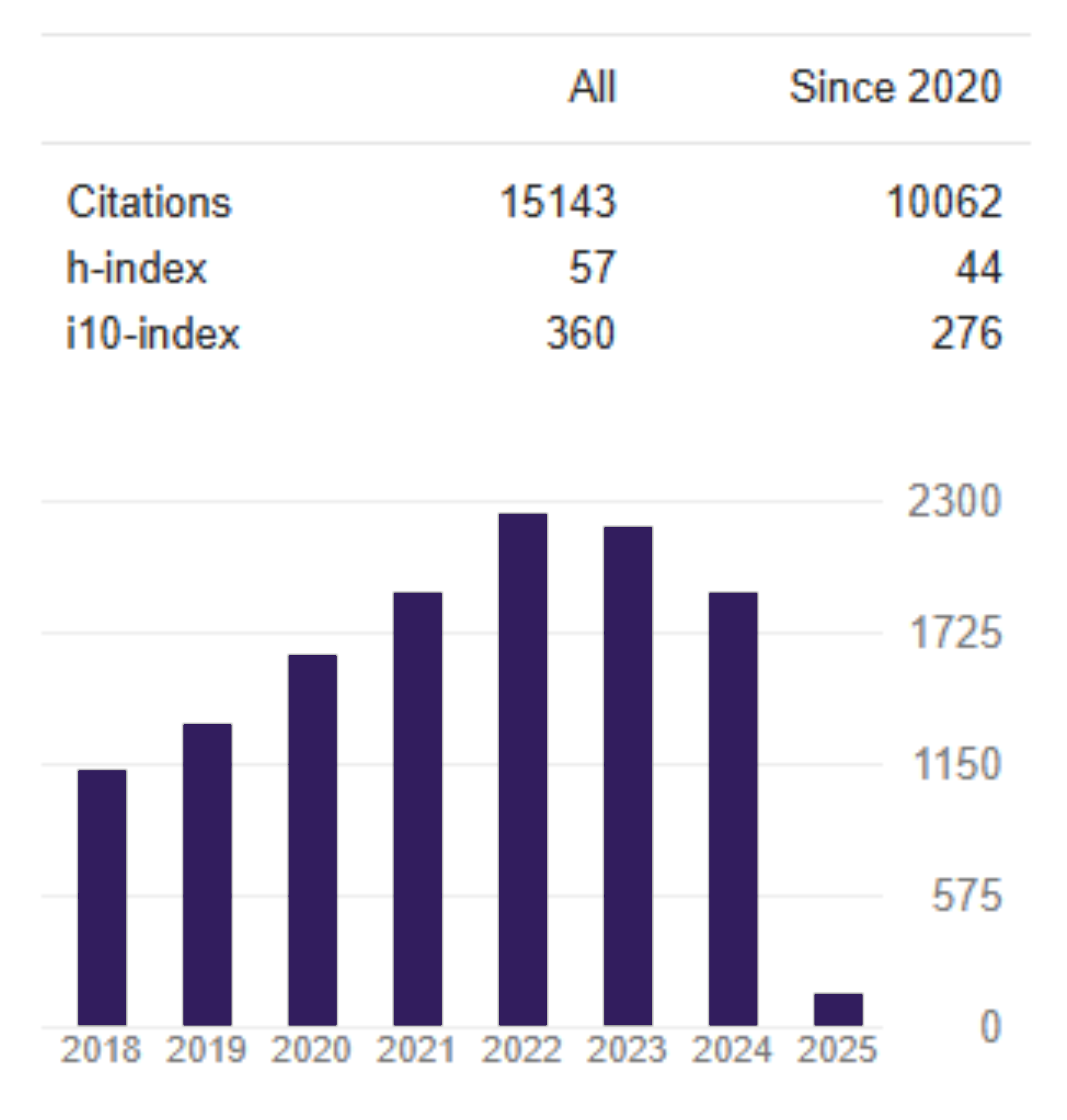Monetary Policy and the Housing Market in Indonesia: Evidence from Selected Regions
DOI:
https://doi.org/10.26905/jkdp.v22i4.2515Keywords:
Houses Prices, Loan to Value, Macro-prudential PolicyAbstract
The housing market in Indonesia tends to have different characteristics in several regions. The government has implemented macroprudential policies regarding mortgage loans for housing and apartments through the Loan to Value (LTV) policy in dealing with credit risk in the housing market. The aimed of this study analyze the effect of LTV policy and regional economic indicator on the house prices in Indonesia, compare the impact of LTV policy and indicator on the types of houses and regions. We used secondary data from eight regions which derived from residential property survey and statistics Indonesia at a monthly frequency. In processing estimated data using Generalized Least Square (GLS) Fixed Effect Model (FEM) to ascertain the effect of LTV policy in each region. The result showed most attributes had a significant effect on housing prices. However, LTV had no significant effect on every type of housing (small, medium, and large). The LTV policy is spatial in accordance with housing market condition in each region.
JEL Classification: E52, O18, R31
DOI: https://doi.org/10.26905/jkdp.v22i4.2515
Downloads
References
Allen, F., & Carletti, E. (2013). Systemic risk from real estate and macro-prudential regulation. International Journal of Banking, Accounting, and Finance, 5(1/2), 28-48. https://doi.org/10.1057/9781137034250_11
Arrondel, L., Badenes, N., & Spadaro, A. (2010). Consumption and investment motives in housing wealth accumulation of Spanish households. Social Science Research Network (SSRN) Electronic Journal. https://doi.org/10.2139/ssrn.1597126.
Ascarya, A. (2009). Toward optimum synergy of monetary policy in dual financial/banking system. Journal of Indonesian Economy and Business, 24(1), 33-48. https://doi.org/10.22146/jieb.6331
Bank Indonesia. (2012). Residential Property Price Survey Quarter I-IV. Jakarta.
Bank Indonesia. (2013). Residential Property Price Survey Quarter I-IV. Jakarta.
Bank Indonesia. (2014). Residential Property Price Survey Quarter I-IV. Jakarta.
Bank Indonesia. (2015). Residential Property Price Survey Quarter I-IV. Jakarta.
Bank Indonesia. (2016). Residential Property Price Survey Quarter I-IV. Jakarta.
Bank Indonesia. (2017). Residential Property Price Survey Quarter I-IV. Jakarta.
Blanchard, O. J., Dell’Ariccia, G., & Mauro, P. (2010). Rethinking macroeconomic policy. Journal of Money Credit Bank, 42, 199–215. http://dx.doi.org/10.2139/ssrn.1555117
Borgersen, T. A. (2017). The optimal LTV-ratio, mortgage market variability, and monetary policy regimes: A demand-side perspective. Journal of Financial Economic Policy, 9(2), 225-239. https://doi.org/10.1108/JFEP-06-2016-0044.
Cadil, J. (2009). Housing price bubble analysis – Case of the Czech Republic. Prague Economic Papers, 2009(1), 38-47.
Claessens, S. (2014). An overview of macroprudential policy tools. IMF Working Paper
Duffy, D. (2012). Irish housing: A role for loan-to-value limits? ESRI Economic Renewal Series No. 7, The Economic and Social Research Institute.
Fontenla, M., & Gonzalez, F. (2009). Housing demand in Mexico. Journal of Housing Economics, 18(1), 1-12. https://doi.org/10.1016/j.jhe.2008.08.001
Glaeser, E. L., & Gyourko, J. (2002). Zoning’s steep price. Regulation, 25(3), 24-30.
Greene, W. H. (2003). Econometric Analysis. 5th Edition. New Jersey: Prentice Hall.
Gujarati, D. N., & Porter, D. C. 2009. Basic Econometrics. 5th Edition. New York: McGraw-Hill.
HlaváÄek, M., & Komárek, L. (2011). Regional analysis of housing price bubbles and their determinants in the Czech Republic. Czech Journal of Economics and Finance, 61(1), 67-91
IMF. (2013). The interaction of monetary and macroprudential policy. IMF Staff Paper. (https://www.imf.org/external/np/pp/eng/2013/012913.pdf)
Ioannides, Y. M., & Zabel, J. E. (2003). Neighborhood effects and housing demand. Journal of Applied Econometrics, 18(5), 563-584. https://doi.org/10.1002/jae.740
Jacome, L. I., & Mitra, S. (2015). LTV and DTI limits–Going granular. International Monetary Fund Working Paper.
Krznar, I., & Morsink, J. (2014). With great power comes great responsibility: Macroprudential tools at work in Canada. International Monetary Fund Working Paper.
Liow, K. H., Ibrahim, M. F., & Huang, Q. (2006). Macroeconomic risk influences on the property stock market. Journal of Property Investment & Finance, 24(4), 295-323. https://doi.org/10.1108/14635780610674507
Mishkin, F. S. (2007). Housing and the monetary transmission mechanism. Proceedings of the Federal Reserve Bank of Kansas City, 359–413.
Muellbauer, J. (2007). Housing, credit, and consumer expenditure. Proceedings of the Federal Reserve Bank of Kansas City, 267–334.
Negro, M. D., & Otrok, C. (2007). 99 Luftballons: Monetary policy and the house price boom across U.S. States. Journal of Monetary Economics, 54(7), 1962–1985. https://doi.org/10.1016/j.jmoneco.2006.11.003
O’Sullivan, A. (2012). Urban Economics. 8th Edition. New York: McGraw-Hill.
Pirgaip, B., & Hepsen, A. (2018). Loan-to-value policy: Evidence from Turkish dual banking system. International Journal of Islamic and Middle Eastern Finance and Management, 11(4), 631-649. https://doi.org/10.1108/IMEFM-08-2017-0208
Rahal, C. (2016). Housing markets and unconventional monetary policy. Journal of Housing Economics, 32, 67-80. https://doi.org/10.1016/j.jhe.2016.04.005
Salins, P. D. (1993). Housing: The concise encyclopedia of economics. Library of Economics and Liberty.
Spencer, R. W., & Huston, J. H. (2013). Monetary policy effectiveness and the housing market. Studies in Economics and Finance, 30(3), 226–243. https://doi.org/10.1108/SEF-Feb-2012-0027
Statistics Indonesia. 2010.
Suh, H. (2012). Macroprudential policy: Its effects and relationship to monetary policy. Federal Reserve Bank of Philadelphia Working Paper, (12-28).
Takatz, E. (2012). Aging and house prices. Journal of Housing Economics, 21(2), 131-141. https://doi.org/10.1016/j.jhe.2012.04.001
Taylor, J. (2007). Housing and monetary policy. Proceedings – Economic Policy Symposium – Jackson Hole, 463–476.
Tem, N. S. D., & Yilmaz, N. K. (2018). Determinants of residential real estate prices in Turkey. European Journal of Business and Social Sciences, 6(10), 41-54.
Utama, C. (2012). Transmisi kebijakan moneter melalui jalur perumahan. Ekonomika-Bisnis, 3(1), 29-42.
Vandenbussche, J., Vogel, U., & Detragiache, E. (2012). Macroprudential policies and housing prices: A new database and empirical evidence for Central, Eastern, and Southeastern Europe. Journal of Money, Credit, and Banking, 47(S1), 343-377. https://doi.org/10.1111/jmcb.12206
Walentin, K., & Sellin, P. (2010). Housing collateral and the monetary transmission mechanism. Sveriges Riksbank Working Paper No. 239.
Walterskirchen, E. (2006). The effect of house prices on growth. Austrian Economic Quarterly, 4,173-179.
Xiao, W. (2013). Learning about monetary policy rules when the housing market matters. Journal of Economic Dynamics and Control, 37(3), 500-515. https://doi.org/10.1016/j.jedc.2012.10.008
Yunus, H. S. (1994). Teori dan Model Struktur Keruangan Kota. Yogyakarta: Fakultas Geografi UGM.
Downloads
Published
Issue
Section
License

This work is licensed under a Creative Commons Attribution-ShareAlike 4.0 International License.



